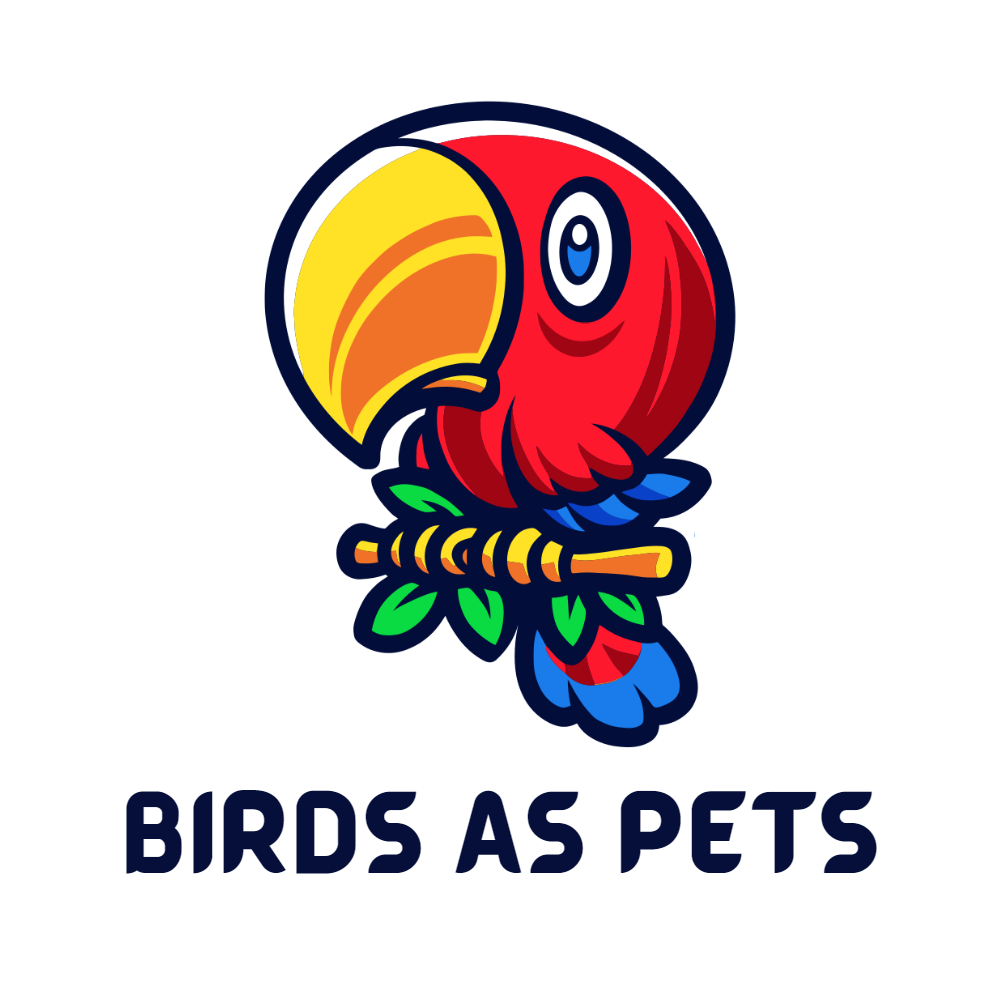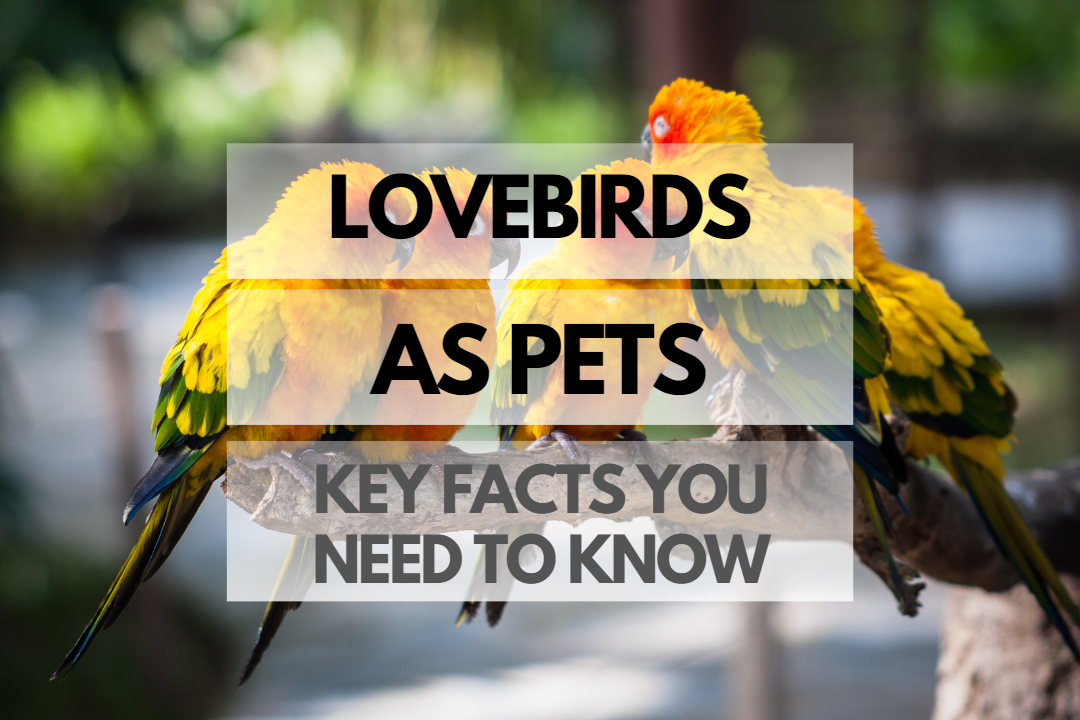Lovebirds are small, colorful, and social parrots that make delightful pets for bird enthusiasts. This article will provide you with essential information about lovebirds, including their behavior, lifespan, and care requirements. So, let’s dive in and learn more about these charming little birds!
Quick Reference Table: Lovebird Facts
| Fact | Details |
|---|---|
| Size | 5-7 inches (13-18 cm) in length |
| Weight | 40-60 grams |
| Lifespan | 10-15 years in captivity |
| Origin | Africa and Madagascar |
| Colors | Various, including green, peach-faced, blue, and yellow |
| Noise Level | Moderate |
Where Do Wild Lovebirds Live?
Wild lovebirds can be found in various habitats across Africa and Madagascar, including woodlands, savannas, and forests. They are social birds that live in small flocks and are known for their strong pair bonds, hence the name “lovebird.”
Lovebird Lifespan: How Long Do They Live as Pets?
Lovebirds typically have a life expectancy of 10-15 years in captivity, with some living even longer. Proper care, including a balanced diet, a clean and spacious cage, and regular veterinary check-ups, can help ensure a long and healthy life for your pet lovebird. Keep in mind that owning a lovebird is a long-term commitment and requires a dedicated and responsible owner.
Are Lovebirds Good Pets?
Lovebirds can make wonderful pets for the right person. They are small, intelligent, and affectionate birds with big personalities. Lovebirds are known for their strong pair bonds, making them a popular choice for pet owners who want a close relationship with their bird. However, they do require regular attention and interaction, as well as a stimulating environment, to keep them happy and healthy.
Are Lovebirds as Pets Good for Beginners?
Lovebirds can be a good choice for beginners, as they are relatively easy to care for compared to larger parrots. They are hardy birds that can adapt well to living in captivity. However, first-time bird owners should be prepared to invest time and effort into learning about lovebird care and providing their pet with the attention and mental stimulation it needs.
Are Lovebirds Easy to Care For?
Lovebirds are generally easy to care for, as they have simple dietary and housing requirements. They need a balanced diet of seeds, pellets, and fresh fruits and vegetables, as well as a clean and spacious cage. Regular interaction and environmental enrichment, such as toys and perches, help keep lovebirds mentally and physically stimulated.
Lovebird Pros and Cons
| Pros | Cons |
|---|---|
| Affectionate and social | Can be noisy |
| Small size makes them easy to house | Require regular attention and interaction |
| Hardy and adaptable | Can be territorial and aggressive if not properly socialized |
Lovebird Price and Costs
Lovebirds can cost anywhere from $50 to $200, depending on factors such as species, color, and age. In addition to the cost of the bird, initial setup costs for a cage, perches, toys, and food can range from $100 to $300. Ongoing expenses include food, veterinary care, and cage maintenance.
Where to Buy Lovebirds
Lovebirds can be purchased from reputable pet stores, breeders, and bird rescue organizations. It’s essential to do your research and find a reliable source to ensure you are getting a healthy, well-socialized bird.
Caring for Lovebirds
Proper lovebird care involves providing a balanced diet, a clean and spacious cage, and regular interaction and mental stimulation. It’s essential to monitor your lovebird’s health and consult with an avian veterinarian as needed.
Lovebird Food
Lovebirds should be fed a balanced diet consisting of seeds, pellets, and fresh fruits and vegetables. A high-quality pellet mix can provide essential nutrients, while fresh produce adds variety and additional vitamins. Be sure to research which fruits and vegetables are safe for lovebirds, as some can be toxic.
Health and Common Issues
Lovebirds are susceptible to various health issues, including respiratory infections, parasites, and nutritional deficiencies. Proper care and regular veterinary check-ups can help prevent and detect these issues early. Familiarize yourself with the signs of a healthy lovebird versus a sick one to monitor your pet’s well-being.
Signs of Healthy Lovebirds
| Healthy Lovebird | Sick Lovebird |
|---|---|
| Bright and alert | Lethargic and unresponsive |
| Smooth and well-groomed feathers | Ruffled or plucked feathers |
| Clear and dry nostrils | Discharge or wetness around the nostrils |
| Active and playful | Decreased activity or interest in toys |
| Eating and drinking regularly | Loss of appetite or difficulty eating |
| Normal droppings | Abnormal droppings or diarrhea |
Lovebird Pet Insurance
Investing in pet insurance for your lovebird can provide financial protection in case of unexpected veterinary expenses. Coverage may include routine check-ups, emergency care, and treatment for illnesses or injuries. Research and compare policies to find one that best suits your needs and budget.
Personality and Behavior
Lovebirds are known for their playful, curious, and affectionate personalities. They are intelligent and energetic birds that enjoy spending time with their owners and exploring their surroundings. Each lovebird has its unique temperament, and socialization is key to ensuring a well-adjusted and friendly pet.
Are Lovebirds Social?
Yes, lovebirds are social animals that thrive on interaction with their human companions and other lovebirds. They form strong pair bonds, which is why they are often kept in pairs. However, single lovebirds can also bond closely with their owners and require regular attention and interaction to stay happy and healthy.
Speech and Noise of Lovebirds
Lovebirds are not known for their ability to mimic human speech like some larger parrots. However, they can be quite vocal, with a range of chirps, whistles, and squawks. While not as loud as larger parrots, lovebirds can still be noisy, especially when they are excited or seeking attention.
Similar Species to Lovebirds
There are several species within the lovebird genus, including the Peach-faced Lovebird, Fischer’s Lovebird, and Black-masked Lovebird. Other small parrots, such as parrotlets and budgies, also share similarities in size and behavior with lovebirds, making them potential alternatives for those interested in small parrots as pets.
Can Lovebirds Live With Other Pets and Birds?
Lovebirds can sometimes coexist peacefully with other birds, such as budgies or cockatiels, in a large and well-supervised environment. However, lovebirds can be territorial and aggressive towards other birds, especially during breeding season. Introducing lovebirds to other pets, like cats or dogs, should be done with caution, as they may perceive the lovebirds as prey.
Are Lovebirds Legal to Have as Pets?
In most places, lovebirds are legal to own as pets. However, local regulations and permits may vary, so it’s essential to research the laws in your area before acquiring a lovebird. Some species, like the Fischer’s Lovebird, may have restrictions due to their conservation status.
Additional Resources
FAQ for Lovebirds as Pets
Do Lovebirds talk?
Lovebirds are not known for their ability to mimic human speech. They can be vocal but primarily communicate through chirps, whistles, and squawks.
Are Lovebirds suitable for families with young kids?
Lovebirds can make good family pets if properly socialized and supervised. Children should be taught how to handle and interact with lovebirds gently and responsibly.
Can Lovebirds be trained?
Yes, lovebirds can be trained to perform simple tricks, step up onto your finger, and even wear a bird harness for supervised outdoor adventures. Positive reinforcement and patience are key to successful training.
How do I know what gender Lovebirds are?
Determining the sex of lovebirds can be challenging, as there is little to no sexual dimorphism in most species. DNA testing is the most accurate way to determine a lovebird’s gender.
What should I feed my Lovebird?
Feed your lovebird a balanced diet of high-quality pellets, seeds, and fresh fruits and vegetables. Avoid feeding them toxic or unhealthy foods, such as avocado, chocolate, or salty snacks.
How do I choose a healthy Lovebird?
Choose a lovebird that is bright, alert, and active, with smooth and well-groomed feathers. Ensure the bird comes from a reputable breeder, pet store, or rescue organization.

